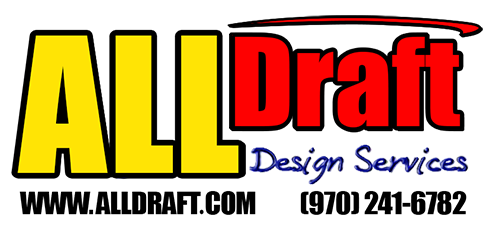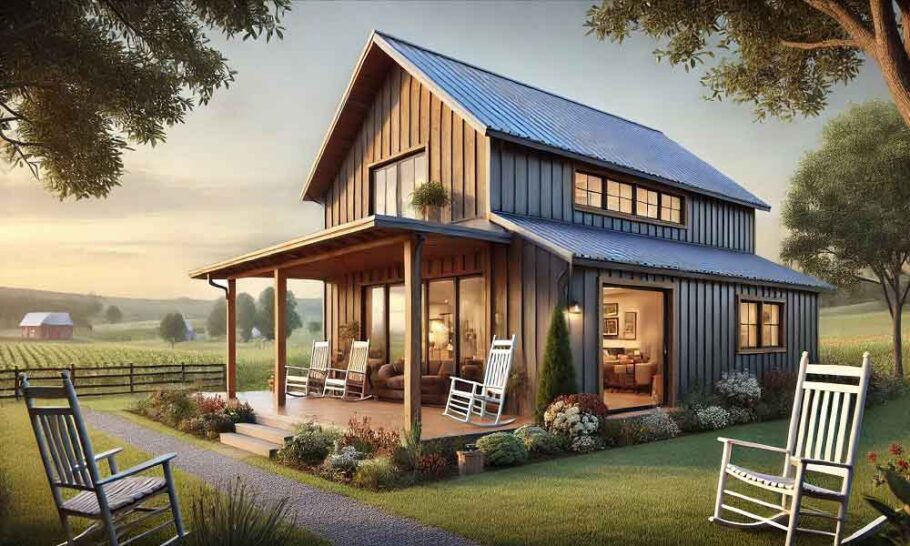Barndominiums — a unique hybrid of barn and condominium — are becoming increasingly popular across the country. With their open layouts, customizable interiors, and cost-effective construction, it’s easy to see why they’ve captured the imagination of homeowners, especially in rural and semi-rural areas.
But one question looms large for many prospective buyers: Are barndominiums safe in tornadoes and hurricanes? This question is particularly relevant in areas prone to severe weather, such as the Midwest, the South, and coastal states.
There’s a lot of misinformation floating around about metal buildings in general, and barndominiums in particular. Let’s break it all down and separate engineering facts from fiction.
Myth #1: “Metal Buildings Can’t Withstand High Winds”
This is probably the most common misconception — that metal buildings are somehow weaker than traditional wood-framed homes when it comes to wind resistance. This couldn’t be further from the truth.
Engineering Reality:
Barndominiums, when engineered properly, are more than capable of withstanding extreme wind conditions — and in many cases, they perform better than stick-built homes. The key lies in their structural design.
Steel is one of the strongest materials used in residential construction. A properly anchored steel frame can resist lateral loads from wind and uplift forces from tornadoes far more effectively than wood. Additionally, metal panels are often designed to interlock and be fastened with high-tensile screws or bolts, creating a tight envelope that resists tearing and deformation.
Tornado Zones and the Truth about EF Ratings
The Enhanced Fujita (EF) Scale is used to rate the intensity of tornadoes based on the damage they cause. Here’s where context matters.
- EF0 to EF2 tornadoes (up to 135 mph): These make up the majority of all tornadoes in the U.S. and can be withstood by well-engineered barndominiums with wind ratings of 140+ mph.
- EF3 and above (136–200+ mph): These tornadoes can destroy nearly any structure — including traditional homes, schools, and even hospitals. Total destruction in the direct path of an EF4 or EF5 is nearly inevitable, regardless of building material.
That said, a barndominium built to International Building Code (IBC) standards and local wind load requirements is just as safe — if not safer — than most residential homes in areas where EF0-EF2 tornadoes are the norm.
Hurricane Performance: Debunking the “Metal Roofs Will Fly Off” Myth
Another popular myth is that metal roofs are prone to peeling off during hurricanes. This usually stems from poor installation practices or outdated perceptions of metal as flimsy or corrugated.
Engineering Truth:
Modern standing seam metal roofs are among the most resilient roofing options during hurricane conditions. Unlike asphalt shingles that can lift off one by one, metal panels can be engineered and fastened to withstand uplift pressures defined by ASCE 7 (American Society of Civil Engineers’ standard for wind loads).
In fact, FEMA and the Insurance Institute for Business & Home Safety (IBHS) often recommend metal roofing in hurricane zones due to its longevity and strength.
Anchoring and Foundations: The Hidden Safety Factor
It’s not just about the walls and roof — what really keeps a building in place during high winds is the foundation and anchoring system. Barndominiums, when properly engineered, use:
- Anchor bolts embedded in concrete footings or slabs
- Wind bracing systems like X-bracing or portal frames
- Moment-resisting frames that prevent racking under wind pressure
These features help distribute wind loads throughout the building, ensuring that the entire structure remains stable.
Proper site engineering, including soil testing and elevation grading, is essential in flood-prone hurricane areas to prevent foundation failure due to soil movement or water erosion.
Code Compliance: Your First Line of Defence
Barndominiums must be built to the same building codes that apply to any residential structure — and that’s a good thing. The International Residential Code (IRC) and the IBC include specific provisions for:
- Wind speed maps
- Seismic loads
- Snow loads
- Roof uplift resistance
In hurricane zones, local jurisdictions may adopt even stricter codes, like those in Miami-Dade County, Florida. A reputable builder or barndominium designer will ensure compliance with these standards through engineering calculations and certified plans.
If your barndominium is designed to meet or exceed these standards, it’s not a metal shed — it’s a fortress.
What about Fire Resistance and Lightning?
It’s worth mentioning that metal buildings also perform better in some disaster scenarios compared to wood-framed homes:
- Fire Resistance: Metal framing doesn’t ignite or fuel a fire like wood does. While interiors may still be combustible, the primary structure is less vulnerable.
- Lightning: Steel is a conductor, yes, but that’s actually an advantage. If properly grounded, metal buildings safely direct lightning strikes into the earth — much like a lightning rod — reducing the risk of fire.
Real-World Case Studies
Case 1: Hurricane Laura (2020)
In Louisiana, several metal homes, including barndominiums, remained standing after Category 4 winds devastated traditional homes in the area. Proper engineering and deep anchoring systems made the difference.
Case 2: Tornado in Texas (2021)
A barndominium just outside of Dallas survived an EF1 tornado with only minor cosmetic damage. It had been built using pre-engineered steel with reinforced concrete piers — again proving the value of robust design.
Tips for Maximizing Safety
If you’re considering a barndominium in a storm-prone area, here are a few tips:
- Work with licensed engineers. Custom engineering for your region’s wind and storm loads is crucial.
- Use hurricane ties and impact-rated doors/windows.
- Anchor everything. From the roof to the foundation, everything must be tied down to transfer loads efficiently.
- Choose a quality builder. Ask for references and examples of past storm-resistant builds.
- Don’t skip insurance. Make sure your barndominium is covered with adequate storm and wind damage policies.
Final Verdict: Are Barndominiums Safe?
Absolutely — when built correctly. Barndominiums can be as safe, or even safer, than traditional homes in tornado and hurricane zones. The key is proper engineering, code compliance, and experienced builders.
So next time someone says, “But what about storms?” you can tell them the truth: barndominiums aren’t just stylish and spacious — they’re structurally sound, weather-resilient homes when done right.
Want to explore design options or talk about building a storm-ready barndominium? Contact us today and we’ll help you create a space that’s as safe as it is stunning.

